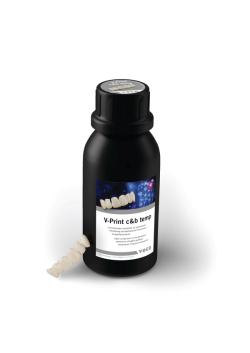- About Us
- Advertise
- Editorial
- Contact Us
- Terms and Conditions
- Privacy Policy
- Do Not Sell My Personal Information
© 2025 MJH Life Sciences™ and Dental Products Report. All rights reserved.
Remineralization and Early Lesion Treatments: What Are Some Options to Consider?
Let's take a look at the goals of remineralization and what products can get you there for those early lesion cases you want to treat before you have to drill and fill them.
Dentists often have to choose whether or not to drill into a tooth when they see an early lesion. These decision trees are complicated and influenced by many factors.
However, if an early lesion is detected and operative treatment is not performed, “monitoring” or “watching” the lesion is likely insufficient to provide the best outcome for the tooth.
Remineralization of tooth structure is a conservative but active plan to manage early lesions. Today, we look at the goals of remineralization and the products that can help get you there.
When acid attacks the tooth's enamel, acid made of H+ ions seeps into it and dissolves its most soluble salts, like carbonate apatite and non-stoichiometric apatite crystals, creating the lesion boundary. The lesion boundary moves forward as the damage advances, creating high levels of calcium and phosphate ions in the tooth. These dissolved ions exit the tooth, following a concentration gradient where they can bind with fluoride at the surface and form a new, dense layer of minerals.1
Adding new minerals to a damaged tooth to fill holes strengthens the tooth. However, remineralization requires calcium and phosphate ions from an outside source to fill the gaps in the damaged enamel, which needs these concentrations to be higher than what's already in the damaged area. These ions move into the tooth through tiny holes and spaces. However, it is essential to get this flow just right; if they are too concentrated, they block the holes in the tooth's surface, preventing more ions from entering.
Various studies show fluoride improves enamel remineralization. However, when dealing with dental decay, any treatment aiming to remineralize teeth should adhere to 2 important principles:2
- Controlling dental plaque is imperative for success.
- Fluoride use in remineralizations can either stop existing cavities from getting worse or slow down the development of new ones.
Nathaniel Lawson, DMD, Ph.D., assistant professor and director of the Division of Biomaterials at the UAB School of Dentistry, says if a lesion has not yet been cavitated, remineralization is the most conservative treatment to attempt, as long as the patient or their caretaker can perform it. However, he says determining when cavitation occurred is a little more challenging for interproximal and occlusal pit caries.
In the cases where Dr Lawson undertakes remineralization, he likes the home hygiene approach. There are a couple of reasons for this.
“I use 5000ppm fluoride toothpaste for this effort, rather than regular toothpaste, which is 1000ppm,” Dr Lawson explains. “I use this treatment because it is easy for the patient to obtain, meaning they can buy it from my office or get it from a pharmacist, and it is easy to use. They use it just like regular toothpaste.”
Studies have shown fluoride treatments, like rinses, can significantly increase remineralization effects on nearby areas affected by cavities compared to other methods. Fluoride varnish can be a valuable addition to preventive care for adult patients, potentially avoiding surgical intervention in those at lower risk for cavities. Community-based studies have found that biannually applying acidulated phosphate fluoride gel can reverse early cavities.3
In addition to fluoride, non-fluoride compounds like casein phosphopeptide (CPP) have shown promise in remineralizing tooth surfaces. CPP stabilizes calcium phosphate in solution, allowing high concentrations of calcium and phosphate ions to penetrate subsurface lesions and promote enamel remineralization. Studies have confirmed that CPPs can effectively promote remineralization of early enamel lesions.
- When it comes to remineralization agents, with or without fluoride, the desirable characteristics include:
- The chosen remineralizing agent should quickly add minerals to the tooth surface, even if it means losing some.
- It should rapidly change the deposited minerals into a stronger type called fluorapatite.
- To finish the remineralization process, the agent should quickly spread over the tooth surface and into any areas below.
- This process should happen even in patients at high risk for cavities.4
So, What Are Your Options for Remineralization Therapy?
There are quite a few, it turns out. Dr Lawson thinks clinicians could also consider other options than high-fluoride toothpaste, which include:
- Fluoride Varnish: This product has an even higher concentration of fluoride than high-fluoride toothpaste, around 22,000 ppm, and is applied every 6 months.
- Calcium-phosphate gels (e.g., MI Paste): These gels contain the ions present in the mineral of teeth (hydroxyapatite).
- Hydroxyapatite Toothpaste: This option has become popular. Some laboratory trials on these products indicate they can remineralize similarly to fluoride toothpaste.
- Curodont: This product from Young Innovations contains peptides to help rebuild enamel with embedded ions that are present in saliva.
- Resin Infiltration: To be clear, Dr Lawson points out that this method is not remineralization; instead, it involves replacing missing mineral content with resin.
A 2015 article from Current Oral Health Reports also provides a helpful summary of many options for remineralization therapy, starting with an overview of acidated fluoride products.
Many acidulated fluoride products, including mouth rinses, gels, and foams, are available. Dental materials manufacturers developed these products to address a limitation of traditional fluoride treatments in remineralization therapy. High-concentration fluoride products often lead to surface-zone remineralization, leaving the deeper parts of the lesion untreated. By lowering the pH of the fluoridated vehicle, such as mouth rinse, or gel, mineral ions can penetrate deeper into the lesion, enabling full remineralization. The low pH environment also encourages calcium and fluoride release from bacterial sources, further enhancing remineralization.5
Curolox® Technology employs self-assembling peptides (P11-4) to regenerate early caries lesions. In this innovative approach, applying the P11-4 monomers to early caries lesions means they permeate the micro-pores of the lesion and organize themselves into a 3D matrix (scaffold) under high ionic strength conditions. This scaffold then attracts calcium phosphate from saliva, serving as a template for forming new hydroxyapatite crystals around the matrix. Essentially, this process initiates biomimetic mineralization, facilitating the regeneration of enamel and dentin. Remineralization of the treated lesion typically requires several weeks to complete.
Arginine Technology incorporates the amino acid arginine into toothpaste formulations, typically at a concentration of 1.5%. This toothpaste also contains insoluble calcium carbonate and 1450 ppm fluoride as sodium monofluorophosphate, tailored for remineralizing early caries lesions and preventing new ones. When used, arginine undergoes deamination by saliva enzymes, producing ammonia, which increases oral pH, promoting remineralization and reducing plaque pathogenicity. The fluoride ions from sodium monofluorophosphate and calcium from calcium carbonate further enhance remineralization.5
Functionalized tricalcium phosphate (TCP) technology is in toothpaste and fluoride varnishes. These products enhance remineralization through improved formulations and the addition of calcium to complement fluoride. Milling β-tricalcium phosphate with organic materials protects the calcium oxides in TCP, allowing coexistence with fluoride ions without premature interactions. Organic materials, such as surfactants, carry the calcium to the tooth surface, where saliva activates it, releasing calcium and fluoride for remineralization.5
One can find surface pre-reacted glass-ionomer (SPRG) filler in toothpaste, sealants, composites, and barrier coats. These fillers utilize a ligand exchange mechanism to release and recharge fluoride ions, providing sustained fluoride release influenced by acidity. They also release various other ions at high concentrations, such as aluminum (Al3+), borate (BO33−), sodium (Na+), and silicate (SiO32−). This multi-ion release capability imbues materials containing SPRG fillers with several therapeutic effects, including pH modulation to neutral or weak alkaline conditions, which is ideal for lesion remineralization. The released fluoride and silica promote apatite formation in oral fluid like saliva, while Sr2+ may enhance tooth acid resistance by converting hydroxyapatite to strontiumapatite.5
Bioactive glass, such as Novamin™, does not contain fluoride. Sodium monofluorophosphate is added separately, risking premature calcium and fluoride reactions to form calcium fluoride (CaF2), which may hinder fluoroapatite formation. Innovators incorporated fluoride, strontium, potassium, and zinc to create fluoride-containing bioactive glass toothpaste. This step enables the simultaneous delivery of Ca2+, PO43−, and F− ions in appropriate amounts for fluoroapatite formation without CaF2 formation. Originally, dentifrice formulations used bioactive glass formulations to treat dentin hypersensitivity by forming a surface layer of hydroxycarbonate apatite on teeth, occluding dentinal tubules. Fluoride-containing bioactive glass serves as a remineralizing additive, releasing fluoride, strontium, zinc, and potassium ions for caries remineralization, prevention, and bactericidal properties. These products release fluoride over 12 hours, forming more stable fluorapatite, aiding in remineralization and acid resistance.5
Nanohydroxyapatite-containing toothpaste and oral rinses, designed for remineralization and caries prevention, contain nanohydroxyapatite (nHAP) ranging from 5-20%, tailored for remineralization, caries prevention, or dentin hypersensitivity treatment. Other calcifying toothpaste and oral rinses combine nHAP with fluoride for remineralization and caries prevention or with stabilized chlorine dioxide for whitening. Nanohydroxyapatite, a biocompatible material, fills micropores in early caries lesions, acting as a template for remineralization by attracting calcium and phosphate ions from oral fluids and promoting crystal growth. When combined with fluoride, nHAP lowers bioavailable fluoride concentration, with NaF being a slight concern compared to sodium monofluorophosphate.5
Silver diamine fluoride (SDF) has gained attention as a caries-preventive agent. A 38% SDF solution effectively arrests coronal caries. In randomized clinical trials, annual applications of SDF halted more active initial caries and reduced new caries formation compared to quarterly applications of NaF varnish. SDF not only arrests caries progression but exhibits antimicrobial properties and an affinity for tooth tissue's mineral and organic components.5
Casein phosphopeptide-amorphous calcium phosphate (CPP-ACP) and fluoride-containing CPP-ACFP, found in products like Tooth Mousse and MI Paste, are designed to promote enamel remineralization and prevent tooth decay. These nanocomplexes bind to tooth surfaces and dental plaque, increasing the concentration of bioavailable calcium and phosphate ions in the oral biofilm. This process aids in remineralization and alters the dynamics of demineralization-remineralization events, effectively preventing caries development. Studies show that these nanocomplexes can penetrate early caries lesions, releasing calcium and phosphate ions to fill crystal voids and form hydroxyapatite or, in the presence of fluoride, fluorapatite. Clinical evidence strongly supports their remineralizing efficacy, making them valuable tools in dental care for combating early caries and promoting overall enamel health.5
Calcium glycerophosphate enhances plaque-calcium concentrations. In a caries clinical trial, combining it with sodium monofluorophosphate (SMFP) in toothpaste proved more effective than SMFP alone, suggesting its role in elevating plaque-calcium levels.5
Theobromine is another active ingredient featured in oral hygiene products. Research suggests that theobromine exhibits comparable remineralization effects despite being 71 times less concentrated than fluoride. It's proposed that theobromine enhances apatite crystallite size and crystallinity in the presence of saliva.5
Remineralization options are abundant. In some cases, remineralizing might be the best option, providing a conservative way to treat the early stages of disease.



